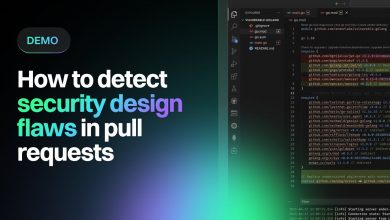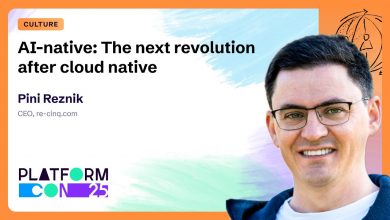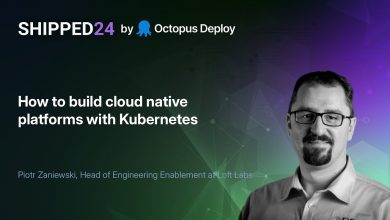Building with AI: How Webflow Engineers Move Faster, Think Deeper, and Ship Smarter
The Webflow CTO unveils the behind-the-scenes magic of how their own engineers and designers harness AI to transform their operations.
 Allan Leinwand’s ground-breaking article “Building with AI” offers a dynamic exploration of how Webflow’s internal teams are leveraging AI-powered DevOps practices to revolutionize their development processes.
Allan Leinwand’s ground-breaking article “Building with AI” offers a dynamic exploration of how Webflow’s internal teams are leveraging AI-powered DevOps practices to revolutionize their development processes.
Published in the cutting-edge landscape of today’s radical disruption of DevOps by AI, this piece dives into the heart of Webflow’s mission to supercharge its internal workflows, making them faster, smarter, and more innovative.
Far from focusing on how users interact with the platform, this article unveils the behind-the-scenes magic of how Webflow’s own engineers and designers harness AI to transform their operations.
Buckle up for a thrilling ride through the key points, amplified with insights that showcase Webflow’s bold vision for the future of DevOps.
AI as Webflow’s Internal Superpower
Picture a team of developers and designers wielding AI like a high-octane tool to streamline their workflows and drive cutting-edge web solutions at lightning speed.
The article reveals how Webflow’s internal teams use AI-driven DevOps practices to automate repetitive tasks, enhance code quality, and accelerate deployment cycles. Through the Model Context Protocol (MCP) Server, Webflow’s engineers connect AI tools like Cursor or Claude Desktop directly to their project data, enabling real-time access to site schemas, collections, and objects.
This isn’t just automation—it’s a revolution, allowing AI to generate context-aware code suggestions and troubleshoot issues with pinpoint accuracy, slashing development time and boosting precision. For example, the article highlights how the MCP Server empowers AI agents to understand Webflow’s project architecture, delivering functional code that aligns perfectly with internal needs.
Insight: This approach mirrors industry trends where AI-driven DevOps is transforming internal processes. A 2024 report from IT Revolution notes that generative AI can cut coding time by up to 40% when integrated with DevOps pipelines, a strategy Webflow is clearly mastering internally.
Streamlining Prototyping and Deployment with AI
Webflow’s design and engineering teams aren’t just coding—they’re redefining prototyping and deployment with AI. The article showcases how AI-powered prototyping, integrated with Webflow Cloud, lets teams spin up interactive prototypes instantly, shareable via a single URL. Gone are the days of clunky screen recordings or static mockups—stakeholders can now interact with live prototypes, providing real-time feedback that fuels rapid iteration.
Allan details how Webflow’s internal “Build Day” events encourage cross-team collaboration, where designers and developers use AI tools like Cursor to clone repositories, prompt solutions, and deploy updates seamlessly. This workflow, backed by continuous integration and continuous deployment (CI/CD) through GitHub, ensures that every code push triggers automated builds, keeping Webflow’s internal projects stable and scalable.
Insight: This aligns with Webflow’s own findings from a 2025 blog post, where they report that AI-driven prototyping has slashed feedback cycles by 50%, enabling faster iteration and higher-quality outputs. It’s a testament to how AI is making Webflow’s internal teams leaner and meaner.
Ethical AI Governance: Keeping Innovation Responsible
Webflow doesn’t just chase speed—it prioritizes responsibility. The article emphasizes how the company embeds ethical AI practices into its DevOps workflows, ensuring that AI tools enhance rather than undermine quality. Internal best practices, shared through training and step-by-step guides, teach teams to craft precise prompts that maximize AI’s effectiveness while avoiding errors or biases.
For instance, AI-driven code reviews are paired with human oversight to catch potential issues, ensuring that generated code meets Webflow’s high standards. The article also notes that Webflow’s AI systems are designed to respect data privacy, explicitly avoiding the use of internal project data for training, which builds trust across teams.
Insight: This focus on governance is critical in regulated industries, as seen in a 2025 Webflow webinar where experts like Dan Locke from IMB Bank discussed mapping AI use cases to strategic outcomes to maintain compliance. Webflow’s internal approach sets a gold standard for ethical AI adoption.
A Culture of Continuous Improvement
Allan paints an exhilarating picture of Webflow’s DevOps culture, where AI fosters collaboration and continuous improvement.
By integrating tools like the Webflow CLI and DevLink, teams sync design systems with codebases effortlessly, ensuring that updates align with Webflow’s visual development ethos. The piece highlights how AI-driven analytics provide insights into deployment performance, helping teams identify bottlenecks and optimize workflows.
For example, Webflow’s internal use of AI-powered monitoring tools, inspired by industry leaders like Netflix’s Chaos Monkey, catches issues early, reducing downtime and boosting reliability. This culture of iterative refinement, fueled by AI, keeps Webflow’s teams agile and ready for the next big challenge.
Insight: This echoes broader DevOps trends, where AI-driven monitoring can reduce outages by up to 23%, as seen in Netflix’s case. Webflow’s internal adoption of similar practices positions it as a leader in innovative DevOps.
Why This Matters
Building with AI is a high-voltage glimpse into how Webflow’s internal teams are using AI to redefine DevOps, from prototyping to deployment and beyond. It’s not about external users—it’s about Webflow’s own engineers and designers wielding AI to build faster, smarter, and more responsibly.
The article’s real-world examples, like instant prototypes and automated CI/CD pipelines, show how AI is propelling Webflow’s internal processes into the stratosphere. While beta tools like the MCP Server are still evolving, the potential is electric, promising a future where Webflow’s teams can innovate at unprecedented scale.
Conclusion
This article is a must-read for anyone excited about the intersection of AI and DevOps. It’s a bold declaration of Webflow’s commitment to leading the charge in internal innovation, offering a blueprint for how AI can transform development workflows.



